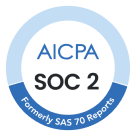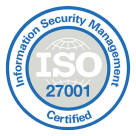
Choosing the wrong call center pricing model is like buying a suit three sizes too big—you’re paying for room you don’t need and still ending up uncomfortable. In fact, businesses can overspend by up to 50%1 on call center services due to factors like location, agency size, and agent skills.
As businesses race to optimize customer experience while controlling costs, the pricing structure you select can mean the difference between a streamlined operation that scales with your growth and a budgetary black hole that drains resources without delivering proportional value.
Behind every efficient customer support operation is a carefully selected pricing framework that aligns with your unique calling patterns, team dynamics, and business objectives. Some businesses benefit from per-minute pricing that adapts to seasonal shifts, while others prefer fixed monthly plans for stable budgeting and reliable service.
Understanding these options isn’t just an accounting exercise; it’s about creating the foundation for customer experience excellence while maintaining the financial flexibility to adapt as your business evolves.
Key Takeaways:
- No single pricing model is universally best. Hourly, per-minute, and performance-based models each serve different business needs, and picking the wrong one can lead to unnecessary expenses.
- Hourly pricing provides cost predictability but lacks flexibility. It’s ideal for businesses with steady call volumes but can result in wasted spend when demand drops.
- Per-minute and performance-based pricing align costs with usage. They help businesses avoid paying for downtime, but unpredictable call volumes can cause budget fluctuations.
- Hybrid models offer a mix of stability and scalability. A combination of fixed and variable pricing structures allows businesses to optimize costs while maintaining service quality.
- Choosing the right call center partner is just as important as pricing. Factors like software integration, agent training, and transparent reporting play a crucial role in overall efficiency.
Struggling with pricing? Let’s explore a fair pricing structure with CloudTalk
What Are Call Center Pricing Models?
Call center pricing models determine how you’ll pay for customer support services, from time-based charges to agent-based rates. Each approach impacts both your budget and operational flexibility differently.
The right model aligns with your specific business needs. Small companies with variable call volumes often benefit from call center software cost structures that offer pay-as-you-go structures, which offer flexibility. ,
Meanwhile, enterprises with consistent demand might prefer the predictability of CCaaS pricing options with dedicated resources. Your industry’s communication patterns also influence which hosted phone system pricing approach will deliver optimal value for your investment.
The Wrong Call Center Partner Costs You More Than Just Money—Choose Wisely.
What Are the Different Call Center Pricing Models?
Before diving into specific contact center pricing models, let’s compare the main call center pricing approaches to help you quickly identify which might work best for your business:
Pricing Model
How It Works
Cost Predictability
Best For
Key Advantage
Hourly
Fixed rate per agent hour
High
Consistent call volumes
Simple forecasting
Per-Minute
Charges based on actual talk time
Medium
Fluctuating demand
Pay only for usage
Per-Performance
Per-Performance
Pricing tied to outcomes (sales, resolution)
Low
Sales operations
Aligns with revenue
Hybrid
Combines multiple pricing structures
Medium
Complex operations
Customizable balance
Each model addresses specific business scenarios, from startups seeking maximum flexibility to enterprises requiring predictable budget allocation. The right call center solution for your needs will depend on your call patterns, growth trajectory, and customer engagement strategy.
Hourly Pricing Model
The hourly pricing model charges a fixed rate for each hour an agent works, regardless of how many calls they handle or the specific outcomes of those interactions.
How it works:
Your business pays for staffed agent time, typically in hourly increments. This model provides straightforward billing where you’re charged for the full duration agents are on duty, even during slower periods. It’s a particularly common solution for traditional call center operations where predictability is valued over usage-based efficiency.
Best for
Organizations with consistent call volumes throughout operating hours, businesses with complex customer issues requiring longer call durations, and companies where continuity of agent knowledge is critical for customer satisfaction.
Pay-Per-Minute Model
A usage-based pricing structure where you’re charged only for the actual time agents spend on calls with customers.
How it works:
Rather than paying for scheduled agent hours, you’re billed precisely for minutes of voice conversation. This includes only active talk time, excluding hold periods and wrap-up time in many implementations. Most providers offer tiered rates that decrease as volume increases.
Best for
Businesses with fluctuating call volumes, seasonal operations, growing companies with unpredictable scaling needs, and organizations looking to maximize agent efficiency while maintaining cost control during quieter periods.
Pay-Per-Performance or Per-Transaction Model
A results-based pricing approach where you pay based on specific outcomes achieved rather than time spent or staff allocated.
How it works:
The call center charges only when defined success metrics are met, such as completed sales, qualified leads, appointments set, or issues resolved. Rates are typically higher per interaction than time-based models but create direct alignment between costs and business results.
Best for
Sales-focused operations, lead generation campaigns, appointment setting services, and businesses where interactions have clearly defined, measurable outcomes tied directly to revenue generation.
Mixed or Hybrid Billing Models
A customized pricing approach that combines elements from multiple models to create a balanced structure that addresses complex operational needs.
How it works:
Typically features a base component (like a minimum hourly commitment or monthly retainer) plus variable elements that flex with usage or performance. For example, you might pay a reduced hourly rate for scheduled agents plus per-minute charges during overflow periods, or combine fixed staffing costs with performance bonuses for exceptional outcomes.
Best for
Growing mid-sized businesses seeking budget predictability with room for scaling, companies with both consistent base demand and seasonal spikes, and organizations with diverse support needs across different departments or products.
Other Pricing Models
Tiered Subscription Models
Increasingly popular among modern call center solutions, tiered subscription models offer bundled features and capacity at fixed monthly rates. These plans typically scale from basic packages for small teams to enterprise solutions with advanced capabilities, making them ideal for businesses seeking simplicity and predictable operating expenses.
Pay-Per-Channel Pricing
Some providers structure pricing based on communication channels rather than time. You might pay one rate for voice support and different rates for chat, email, or social media interactions. This approach works well for omnichannel support strategies where customer conversations frequently move across platforms.
Outcome-Based SLA Pricing
An emerging trend ties pricing directly to agreed-upon service level achievements rather than inputs. For instance, costs might adjust based on meeting customer satisfaction scores, first-call resolution rates, or average response times—creating direct financial alignment between provider performance and your customer experience goals.
Which Call Center Pricing Model is Best for Your Business?
The ideal model creates a financial structure that supports your business objectives while providing the flexibility to adapt as your needs evolve.
If Your Business Needs
Consider This Model
Cost Predictability
Budget predictability and stable staffing
Hourly pricing
Fixed costs simplify forecasting and ensure consistent agent availability
Handling seasonal peaks and quiet periods
Pay-per-minute
Costs scale directly with actual usage, preventing overspending during lulls
Driving revenue-generating conversations
Performance-based pricing
Direct alignment between call center costs and business outcomes
Complex support with varying call types
Hybrid models
Customized approach balances fixed and variable elements
Omnichannel customer engagement
Channel-based or subscription
Unified pricing across multiple communication platforms
Find the Right Balance of Cost & Performance—Try CloudTalk Today
How to Choose the Right Call Center Partner
The right provider becomes an extension of your customer experience strategy, representing your brand through every interaction. This decision impacts not just your operational costs, but ultimately your customer relationships, team efficiency, and revenue growth.
Evaluating Call Center Providers
When assessing potential partners, focus on these four critical dimensions that determine long-term success:
- Technical Capability & Integration Depth
Evaluate how seamlessly the provider’s systems connect with your existing technology stack. Look for partners offering robust APIs and pre-built integrations with popular CRM platforms, ensuring customer data flows smoothly across systems. The most valuable partnerships eliminate data silos, creating a unified view of customer interactions across all touchpoints. - Agent Quality & Training Methodology
The people handling your customer conversations ultimately define your support experience. Investigate the provider’s hiring standards, training curriculum, and ongoing quality assurance processes. Request specific examples of how they onboard agents to understand your products and brand voice, particularly if you operate in a specialized or technical industry. - Scalability & Flexibility Framework
Your business needs will evolve, sometimes rapidly. The right partner provides flexible staffing models that can scale with seasonal demands or growth spurts without compromising quality. Examine their capacity planning methodology and ask about their performance during previous clients’ peak periods or unexpected volume surges. - Performance Metrics & Transparency Standards
Leading providers embrace accountability through robust reporting and shared success metrics. Look for partners offering real-time dashboards, customizable KPIs, and regular performance reviews focused on continuous improvement rather than contract compliance. This transparency creates the foundation for a true strategic partnership.
The In-House Alternative
Building your own call center can be the right strategic choice in specific scenarios. This approach makes sense when:
- Your customer interactions require deep product knowledge that’s difficult to outsource
- You have highly variable call patterns that would be expensive under traditional pricing models
- Your business strategy positions customer experience as a core competitive differentiator
- You serve regulated industries with strict compliance and security requirements
Modern cloud-based call center solutions have dramatically reduced the technical barriers to creating in-house operations, making this option increasingly viable even for mid-sized organizations. With the right platform, you can launch a professional contact center without extensive infrastructure investments.
Selecting Cost-Effective Software
When evaluating software options, prioritize these cost-optimizing capabilities:
- Intelligent routing algorithms that match customers with the right agents on the first try, reducing transfer rates and handling time
- Automation tools for routine inquiries, freeing agent capacity for complex interactions
- Integrated analytics that identify process inefficiencies and optimization opportunities
- Omnichannel capabilities that maintain context as conversations move across communication channels
- AI-enhanced tools like sentiment analysis and automatic call summaries that improve first-call resolution rates
Call Center Pricing: The Right Fit or an Expensive Mistake?
Ever ordered a massive meal when you were only a little hungry? You tell yourself you’ll eat it all, but halfway through, you realize you’ve overestimated. Now you’re stuck—too full to finish, but too stubborn to admit you wasted money.
That’s what picking the wrong call center pricing model feels like. Hourly pricing? It’s great if you’re always busy. Per-minute plans? —Awesome until an unexpected spike blows your budget. Performance-based pricing? Perfect, if you trust that every call will deliver results.
The trick is knowing what you’ll actually use. If your call volume is unpredictable, don’t overcommit. If you’re running a revenue-driven operation, make sure you’re paying for outcomes, not just effort.
Switch to Smarter Call Center Pricing—Get 50% Off Your First Month
Source:














